Education
A list of common items and what to do for your pet can be found here at the Pet Poison Helpline. We want all pet parents to know that Xylitol, which is found on this list, is sometimes marketed as “birch sugar” and is fatal to dogs! It can be found in gum, mints, jello, pudding, peanut butter and many other things.
This website has detailed information about when to do a bland diet and how to prepare the food for a bland diet for your dog.
Bland Diet Instructions for Dogs
General Information: A bland diet is a diet that is soft and highly digestible. It is low in fiber, fat and protein and is high in carbohydrates. Since bland diets are low in fiber, stool production slows and defecation is less frequent. Bland diets are fed to rest the gastric system and to help promote normal stool formation. Generally, it is best to withhold food for the first 24 hours after a vomiting episode. After 12 hours on a liquid diet, you may offer your pet a small amount of the bland diet. If your pet has diarrhea, but no vomiting, there is no need to withhold food or water. You can start your pet on a bland diet.
Homemade Recipe: We strongly recommend purchasing the below prescription diets. *Commercial bland diets that we offer are (dry &/or canned): “Hills I/D” or “Royal Canin Intestinal HE”. * But if you would like to make it yourself the following recipe will work. Mixing 3 parts boiled white rice and 1 part boiled lean chicken breast(without skin and bones) or boiled lean ground beef (sirloin is best). Homemade bland diets can be pre-made and stored in the refrigerator for a maximum of 48 hours. If you add dairy, please use nonfat plain yogurt and low-fat cottage cheese in small amounts. You may warm each meal slightly.
Feeding Amounts:
Prescription diets: Simply follow the instructions on the bag for the amount needing to be fed per day.
Homemade diets: Please use these guidelines, unless otherwise noted by your veterinarian;
| Dog’s Weight (pounds) | Total Amount per Day |
| <5 | ½ cup |
| 5 – 15 | ½ – ¾ cup |
| 16 – 30 | 1 – 1 ½ cups |
| 31 – 50 | 1 ½ – 2 cups |
| 51 – 75 | 2 – 3 cups |
| 76 – 99 | 3 – 4 cups |
| >100 | 4 – 5 cups |
Feeding Instructions: Take your total amount per day & divide it into 4 – 6 meals per day (if your total per day is 3 cups, then feed your dog ½ cup 6 times a day, allowing about 2 hours between each meal). Stools should almost be returned to normal by day 5 (if not, please call us for further instructions). The bland diet should be the only food your dog gets — no exceptions (no other treats, table scraps or bones) for 4 -5 days.
Transition back to normal diet: On day 5 or 6, begin reintroducing your dog’s normal diet, by mixing it with the bland diet. Each day that passes, you will reduce the amount of bland diet & increase the amount of regular dog food while keeping the frequency guidelines for your pet’s size. Continue restricting treats, table scraps & bones until 1 week has passed without signs of diarrhea.
*The “typical” bland diet regimen lasts about 10 days; however, this timeline may be adjusted to meet the individual patient’s needs.
1. You are unable to medicate your pet
2. The vomiting and diarrhea worsens
3. Your pet is not responding appropriately
This webpage from the American Veterinary Medical Association should answer most of your questions about a dental for your dog or cat. We would be happy to answer any other questions you might have or schedule a pre-dental exam to prepare your pet for their dental. Give us a call!
Check out this article from the Seattle Times about bloodwork and urinalysis. I was interested to learn how many types of white blood cells there are and why they could be important. The article also explains what can be learned from an abnormal and normal CBC.
This resource from Pet WebMD explains everything from the caloric requirements of your feline and canine friends to the water intake and much more! Did you know which protein is the most important for cats? And where they get it? Learn what nutrients your pet needs and how to tell if they are a healthy weight.
Curious about grain-free diets and what they might mean for your pet? Please read this article from the American Kennel Club, a non-profit dedicated to the love and health of domesticated canines. More information is needed to help combat Dilated Cardiomyopathy or DCM. Knowing what to look for and reporting it can help your dog and DCM researchers, and consequently, other dogs.
Contrary to popular belief, your pet needs protection year round. Good protection can prevent expensive health concerns like skin issues and life threatening consequences for you and your pet. Learn more by visiting this page from Zoetis, the manufacturer of some of our favorite flea and tick products. Zoetis stand by their products and we have seen how they really work. Many myths surround this squirmy topic. Be a pet hero and learn truth from fiction when it comes to parasite protection.
Parasite protection for dogs: Simparica Trio. Video
Parasite protection for cats: Revolution Plus
Worry free 12-month protection for your dog: Proheart
If your dog is itching like crazy and nothing seems to help. We can help! It may seem counter-intuitive but the first step is to reduce or eliminate the itch response. Our first priority and the best thing we can do for your pet is to reduce their suffering. Eliminating the itch or drastically reducing it will not prevent us from being able to determine the source of the itch. We may recommend Apoquel as a powerful way to reduce inflammation and stop the madness! Click the name to learn more about this medicine. We can also recommend Cytopoint, an injection that gives 4-8 weeks of relief. The second step in helping your pet, is visiting with your veterinarian about what you have observed so we can narrow down the source of the itching. The results of this visit will help determine the most effective course of action. Call us as soon as you notice your dog is scratching excessively to prevent a medical condition from getting out of control.
If you have ever been stuck in a car for 10 hours with an unhappy cat, you know what true misery is. You are miserable. Your cat is miserable. You are keeping her in her carrier to prevent her from becoming a stray on the side of I-80 but after 8 hours you begin to wonder how much more you can take. Sound familiar? How can you handle road trips better? What should you plan for a dog, a cat during holiday travel? What can you do about a pet that gets carsick? What are some tips for flying with pets? Find these answers and more here. And, as always, call us to schedule a visit with your veterinarian to get tips and tricks and important prescriptions for your pet.
The American Kennel Club, a reputable non-profit, has a great website about All Things Dog.


